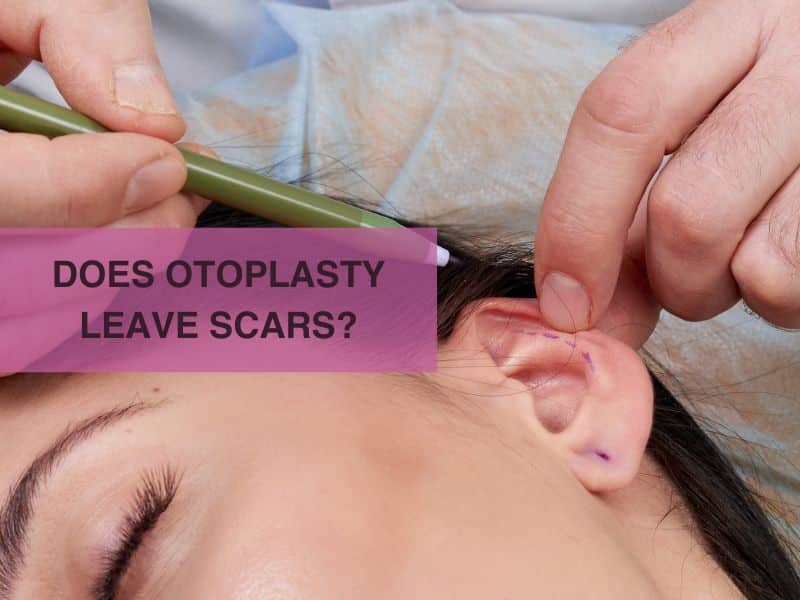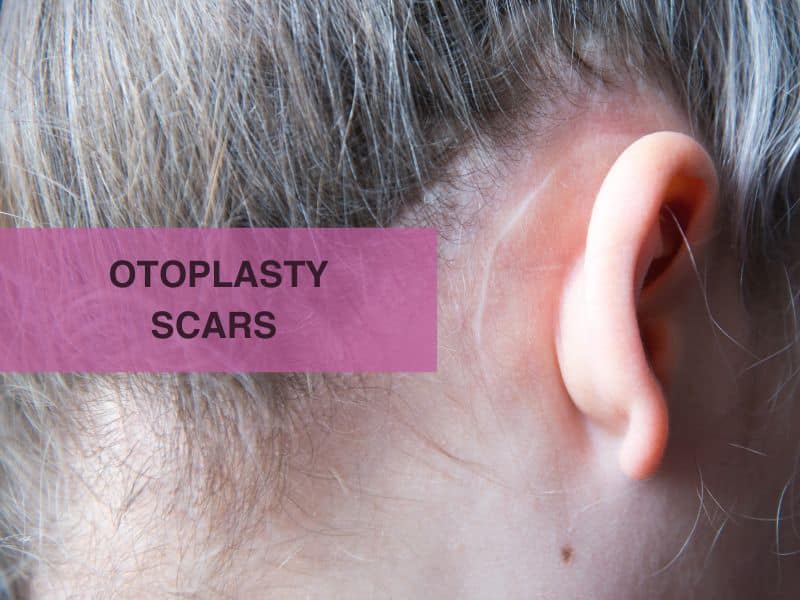5 Things to Know About Otoplasty Scars
Written by: Dr. Dahlia Rice. Posted in: Blog

A key concern many patients have when undergoing otoplasty is whether scars from this procedure will be noticeable. Understanding otoplasty scars can help you set up realistic expectations for surgery and put your mind at ease.
Table of Contents
ToggleDoes Otoplasty Leave Scars?
Yes. Any surgical procedure that necessitates incisions will result in at least a small amount of scarring. Otoplasty requires incisions and leaves scars.
Are Otoplasty Scars Visible?
To an extent, they may be. But overall, scars after otoplasty are small and hard-to-see. They are located in discreet spots around the ear and hairline.
What to Know About Otoplasty Scars
1. Otoplasty scars are typically well hidden.
One of the most reassuring aspects of otoplasty is that the incisions are generally made in discreet locations such as behind the ears, inside the ears, or along the hairline. Take a close look at otoplasty scars pictures to see examples.
2. Scarring depends on what otoplasty techniques were used.
The type of otoplasty techniques used will change the outcome of your scars. Usually, you’ll have some scars behind the ears. Occasionally, for protruding ears or prominent ears, incisions may be made just inside the ear or along the front of the ear.
However, if ear cartilage needs to be repositioned or reshaped, bigger incisions may be needed, and sometimes these will be made along the hairline or even elsewhere on the body for skin or fat grafting.
3. Otoplasty scars fade with time.
Like most surgical scars, otoplasty scars will fade with time. Right away after surgery, you’ll have brighter, more noticeable scars that are slightly raised. This can be scary because you’ll also have slightly discolored and misshapen ears with the bruising and swelling.
But don’t worry. Scars tend to close up and heal over fairly quickly. Your large and protruding ears will be gone following your otoplasty recovery, and you’ll be left with hardly noticeable surgical incision sites after just one year.
4. Aftercare is important when it comes to scar appearance.
How you care for your incision sites following otoplasty will play a big role in determining how your otoplasty scars look down the line. Naturally, the better you adhere to your plastic surgeon’s instructions, the better off you’ll be.
If you want to learn more about what will be expected of you during your recovery, talk to your surgeon now. The further in advance you start planning for this portion of the procedure, the better.
You’ll need to change your habits and lifestyle for a short time. But after that, your life should slowly begin to return to normal as you resume your daily activities and enjoy your new ears.
5. Sun protection after surgery is critical.
Exposure to the sun can worsen the appearance of scars, making them more prominent and potentially causing long-lasting discoloration. All otoplasty surgeons recommend that after otoplasty, you stay out of the sun as much as possible.
If you must go outside, be sure to wear a wide-brimmed hat as well as sunscreen with an SPF of at least 50. Never use a tanning bed after this procedure.
FAQs: Otoplasty Surgery
How long does it take for otoplasty scars to heal?
Otoplasty scars typically take several weeks to fully heal on the surface, but it can take up to a year or longer for otoplasty scars to minimize completely. This also depends on how many incisions you require (and where), how much scar tissue you have, your skin type, and how well you cared for your ears after plastic surgery during the healing process.
Can I get keloid scars after otoplasty?
Yes, technically, keloid (large raised scars) can occur after otoplasty, but it’s rare. If this happens, you might require revision surgery.
Can I wear glasses after otoplasty?
Wearing glasses after otoplasty can be tricky since they rest on the ears and will inevitably be near your ear surgery incisions (ear surgery scars). Most plastic surgeons will tell you to wait a few weeks after your cosmetic ear surgery before returning to glasses use. In some cases, you may be able to position your glasses differently or use a headband if you really need to wear them for your sight.
Is otoplasty painful?
Otoplasty is usually performed under general anesthesia, so there won’t be any pain during your ear pinning procedure. After surgery, it’s normal to experience mild discomfort. But with pain medication, you should be able to manage the soreness until it goes away on its own (usually after a few days).
Can otoplasty be done on one ear?
Certainly. Otoplasty can be performed on one ear if needed. In some cases, only one ear may be affected by a deformity or asymmetry, so an otoplasty procedure on both ears would be totally unnecessary.
Request Your Consultation Today
Ready to learn more about otoplasty surgery? Call today to book a consultation appointment for this highly effective surgery.
There’s no reason to continue struggling with large protruding ears that make you feel self-conscious. Call today to schedule your consultation appointment for otoplasty with board-certified plastic surgeon Dr. Dahlia Rice in Chicago.


